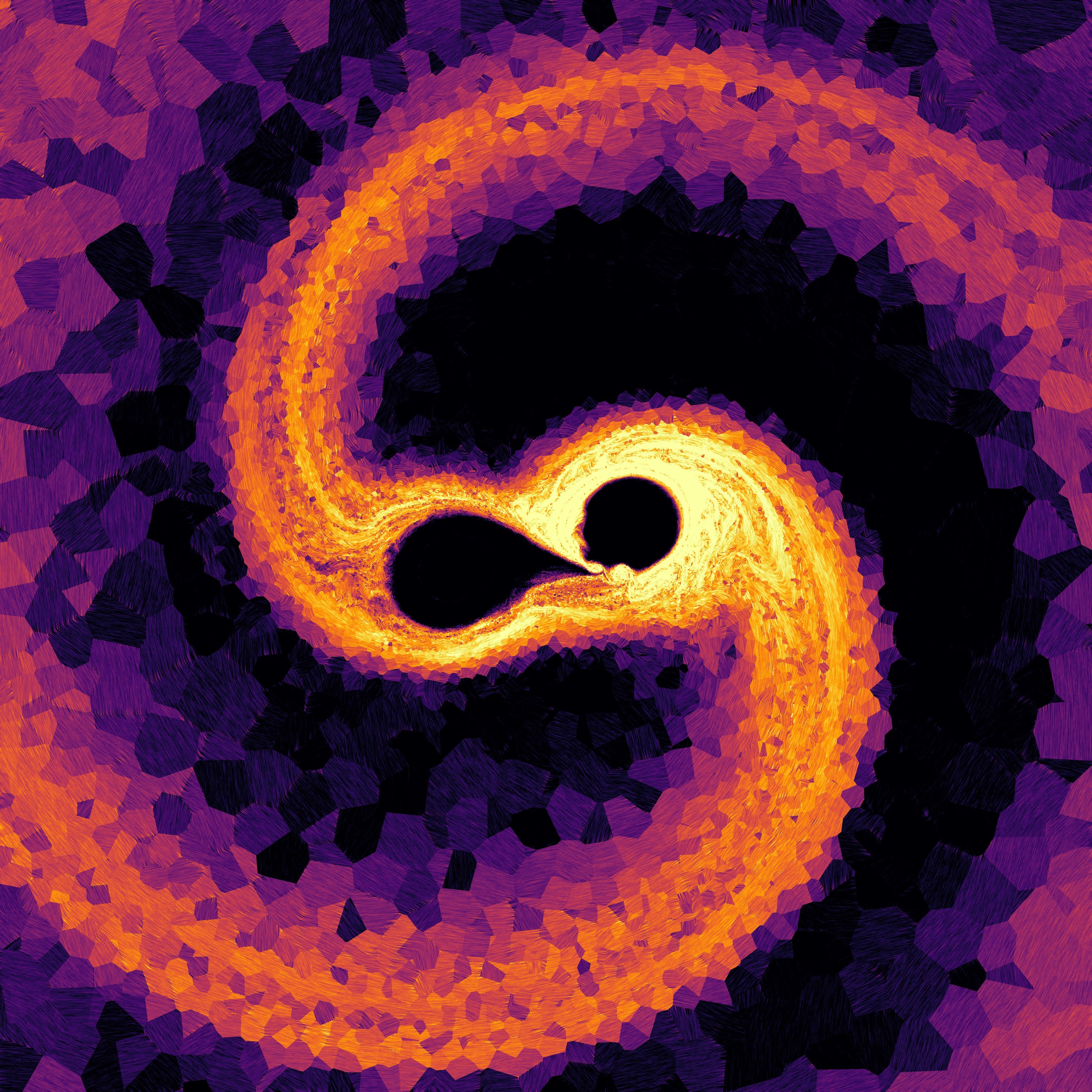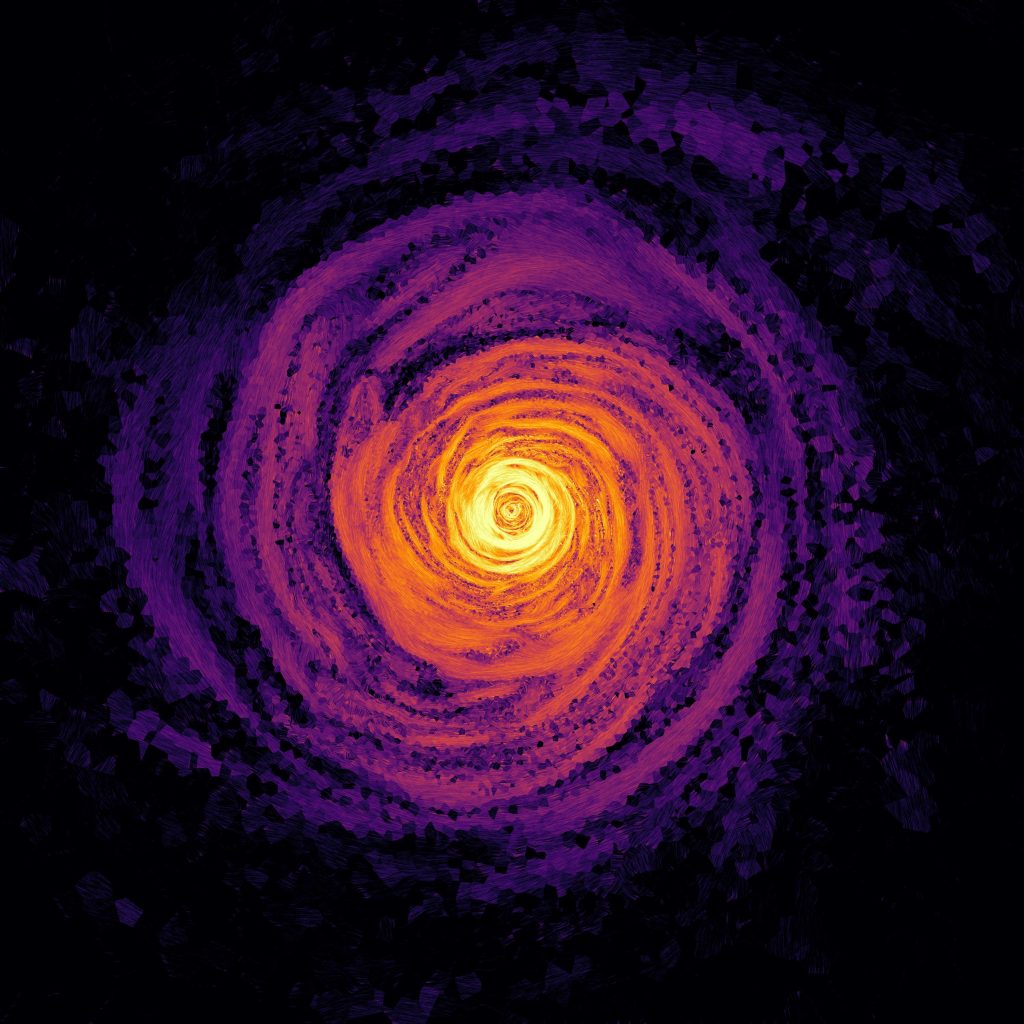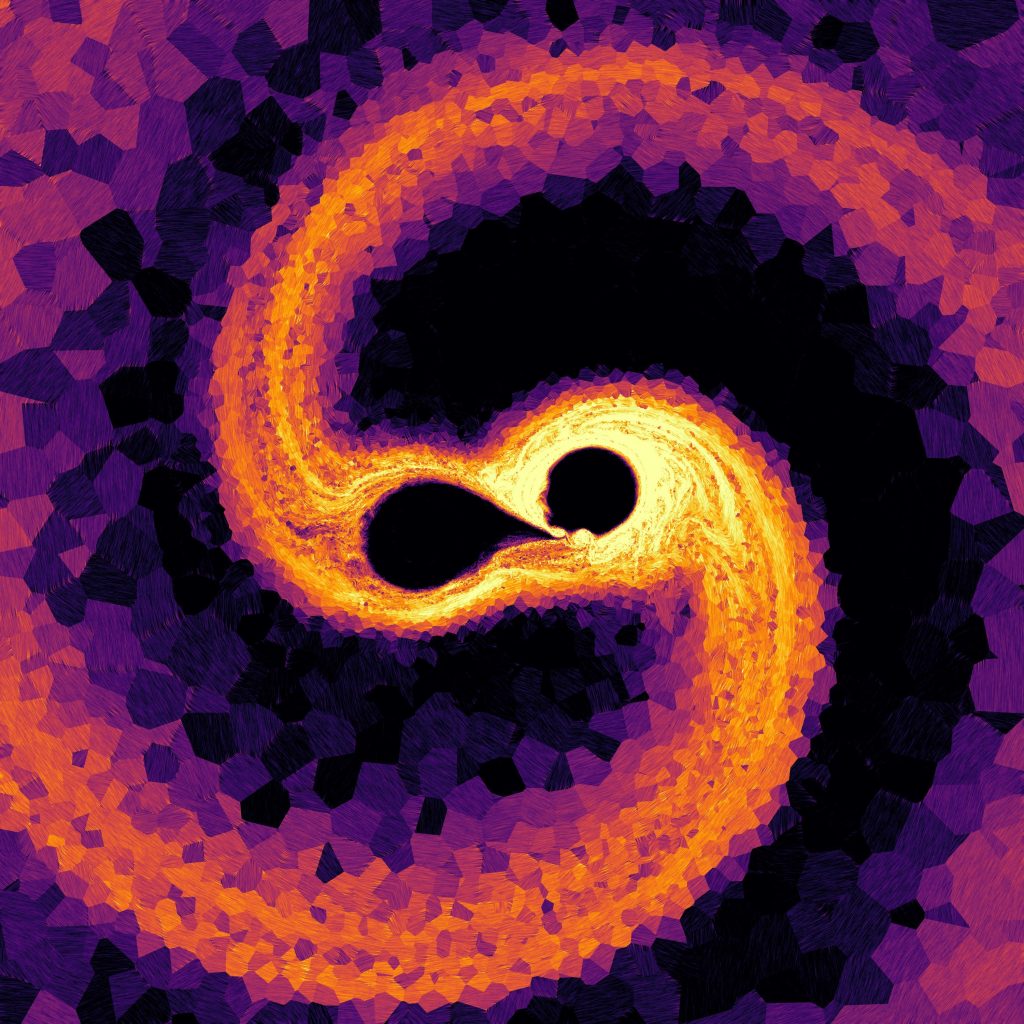The irresistible pull – when massive stars collide
All neutron stars are magnetic, but some are more magnetic than others. The latter, so-called magnetars, are the strongest magnets in the Universe. The reason for their exceptionally large magnetic field is most probably that they formed in supernovae of already highly magnetized stars. But how do these massive stars acquire their large magnetic field? A team of astrophysicists from Germany and the UK may now have solved this more than 70-year-old conundrum of the origin of strong magnetic fields in massive stars. With the help of large computer simulations, they developed a model which shows that these can be formed in stellar mergers. The results were published in the scientific journal Nature.

Novel code shows production of magnetic fields
Our Universe is threaded by magnetic fields. “We know that the Sun has a turbulent envelope in which its magnetic field is continuously generated. But more massive stars do not have such an envelope. Still, about 10 percent have a strong, large-scale surface magnetic field whose origin has eluded us since their discovery in 1947,” says Fabian Schneider from Heidelberg University in Germany, first author of the study. It is these stars that astronomers believe to form highly magnetic neutron stars when they explode in supernovae.
“Already over a decade ago, it was suggested that strong magnetic fields might be produced when two stars collide”, says Sebastian Ohlmann from the Max Planck Society in Garching, Germany. “But up until now, we had not been able to test this hypothesis, because we did not have the necessary computational tools.” This time, the team utilised the novel AREPO code and ran it on computing clusters of the Heidelberg Institute for Theoretical Studies (HITS). They showed that a strong magnetic field is indeed produced thanks to the strong shear and the large turbulence present in the merger of two stars. Stellar mergers occur frequently, and it is thought that about 10 percent of all massive stars in the Milky Way are the products of stellar mergers – a good match with the occurrence rate of magnetic stars.
Double effect of stellar mergers
When stars merge, they appear younger than they really are. This phenomenon is well known, and such stars are called blue stragglers. “In 2016, we realised that the magnetic star Tau Scorpii (τ Sco) is a blue straggler and could show that, if τ Sco was a merger product, it would explain its anomalously young age,” remembers Philipp Podsiadlowski from the University of Oxford, UK. “We then suggested that this star may also have obtained its strong magnetic field in the merger process.”
At the end of its life, τ Sco will explode in a supernova when its core collapses and most probably leave behind a highly magnetized neutron star. “These magnetars are thought to have the strongest magnetic fields in the Universe – one hundred million times stronger than the strongest magnetic field ever produced by humans,“ says Friedrich Röpke from the Physics of Stellar Objects group at HITS. “Our simulations show that the generated magnetic field could be sufficient to explain the exceptionally strong magnetic fields inferred to exist in magnetars,” adds Fabian Schneider. “It makes our model a promising channel to explain the origin of such extremely strong magnetic fields. It is great to see that this idea now seems to work out so beautifully.”
Scientific contact
Dr. Fabian Schneider
Zentrum für Astronomie, Astronomisches Rechen-Institut, Universität Heidelberg
Tel.: +49 (0)6221 54-1881 or +49 (0)6221 533-388
Email: fabian.schneider@uni-heidelberg.de
Dr. Sebastian Ohlmann
Max Planck Computing and Data Facility
Tel.: +49 (0)89 3299-1144
Email: sebastian.ohlmann@mpcdf.mpg.de
Prof. Dr. Friedrich Röpke
Physics of Stellar Objects group
Heidelberg Institute for Theoretical Studies (HITS)
Phone: +49 6221 533 270
Media contact
Dr. Peter Saueressig
Head of Communications
Heidelberg Institute for Theoretical Studies (HITS)
Phone: +49 6221 533 245
peter.saueressig@h-its.org

“The birth of a magnetic star”: The simulation shown here marks the birth of a magnetic star such as Tau Scorpii. The image is a cut through the orbital plane where the colouring indicates the strength of the magnetic field and the hatching represents its field lines. (Pictures: Ohlmann/Schneider/Röpke). 
“The birth of a magnetic star”: The simulation shown here marks the birth of a magnetic star such as Tau Scorpii. The image is a cut through the orbital plane where the colouring indicates the strength of the magnetic field and the hatching represents its field lines. (Pictures: Ohlmann/Schneider/Röpke).
Notes
[1] The Arepo is a novel code that uses a so-called moving mesh. This technique allows researchers to combine the benefits of more traditional so-called Eulerian and Lagrangian methods and has been key in this study. The code has been developed by Volker Springel and his group at HITS and is mainly used in simulations of cosmological structure formation and galaxy evolution. In this study, Arepo has been adopted for stellar astrophysical applications. More on Arepo here: https://www.h-its.org/2014/10/28/arepo/
[2] The star τ Sco has an average surface magnetic field of about 0.05 Tesla and a mass of 17 times that of the Sun. With an apparent age of <5 million years, it is a blue straggler in the 11-million-year-old Upper Scorpius association. Its surface magnetic field is 500–1000 times stronger than that of the Earth but only twice as strong as that of a powerful refrigerator magnet. In the interior of the star, the magnet field is likely much stronger. τ Sco can be seen with the naked eye in the Scorpius zodiac constellation and is located about 500 light years away from us.
[3] Neutron stars are some of the most exotic objects in the Universe. They are the compact remnants left behind by massive stars in supernova explosions. With a mass of 1–2 times that of the Sun and a radius of only 10–15 km, they are so dense that a teaspoon full of neutron-star matter would weigh about 1,000 million tons on Earth. Maybe of order 15% of all neutron stars are thought to be born with extremely strong magnetic fields as magnetars.
More Information
This press release describes the key results and implications of the paper “Stellar mergers as the origin of magnetic massive stars” published in the journal Nature on 10 October 2019.
DOI: 10.1038/s41586-019-1621-5 https://www.nature.com/articles/s41586-019-1621-5.
The team of scientists consists of Fabian Schneider (Zentrum für Astronomie, University of Heidelberg, Germany; Heidelberg Institute for Theoretical Studies, Germany; Department of Physics, University of Oxford, UK), Sebastian Ohlmann (Max Planck Computing and Data Facility, Germany), Philipp Podsiadlowski (Department of Physics, University of Oxford, UK), Friedrich Röpke (Heidelberg Institute for Theoretical Studies, Germany; Zentrum für Astronomie, University of Heidelberg, Germany), Steven Balbus (Department of Physics, University of Oxford), Rüdiger Pakmor (Max-Planck-Institut für Astrophysik, Germany) and Volker Springel (Max-Planck-Institut für Astrophysik, Germany).
Links, related topics and other resources
Electronic version of the paper: https://www.nature.com/articles/s41586-019-1621-5.
- Video on Youtube: https://youtu.be/OvjM5_OXDeI
- Magnetic field topology of τ Sco:
http://www.cfht.hawaii.edu/News/TauSco/tausco_eng.html - VFTS 352 – a massive touching binary star heading for
catastrophe:
https://www.eso.org/public/news/eso1540 - Link to eta Car PR from Smith about its binary merger
origin?
https://hubblesite.org/contents/news-releases/2018/news-2018-33.html - Maybe also link to V838 Mon?
https://hubblesite.org/contents/news-releases/2003/news-2003-10.html - V1309 Sco – Two stars merged and we got to watch:
https://astrobites.org/2012/08/01/two-stars-merged-and-we-got-to-watch/
About HITS
HITS, the Heidelberg Institute for Theoretical Studies, was established in 2010 by physicist and SAP co-founder Klaus Tschira (1940-2015) and the Klaus Tschira Foundation as a private, non-profit research institute. HITS conducts basic research in the natural, mathematical, and computer sciences. Major research directions include complex simulations across scales, making sense of data, and enabling science via computational research. Application areas range from molecular biology to astrophysics. An essential characteristic of the Institute is interdisciplinarity, implemented in numerous cross-group and cross-disciplinary projects. The base funding of HITS is provided by the Klaus Tschira Foundation.